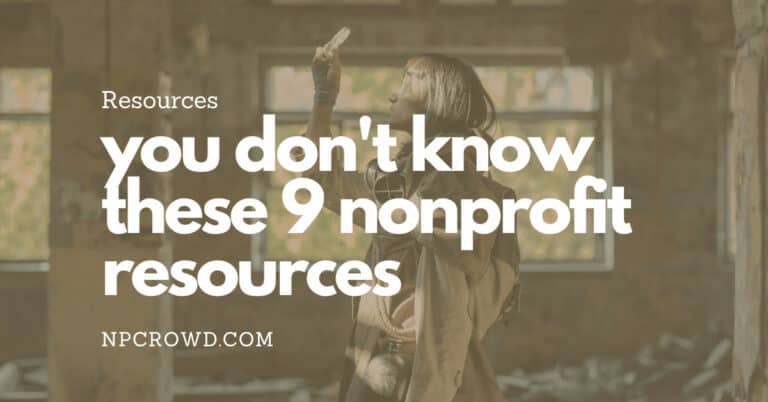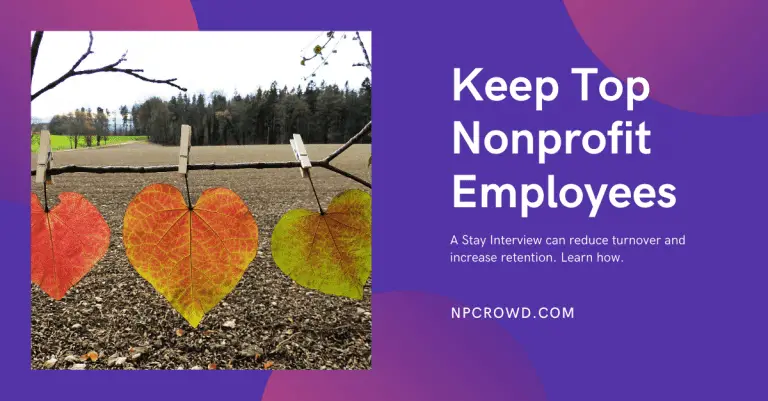PEO for Nonprofits: Streamlining Human Resources Processes
Disclaimer: This post may contain affiliate links. These links, if used and purchases made, we may earn a small commission. These affiliate programs do not impact the recommendations we make or the resources we refer you to. Our focus is on providing you the best resources for your nonprofit journey.
PEOs (Professional Employer Organizations) offer a solution for nonprofits to streamline their human resources processes. By outsourcing tasks like recruitment, payroll, and compliance management to a PEO, nonprofits can save time and resources, allowing them to focus on more strategic activities. In this article, we will explore the benefits of using a PEO for nonprofits, the key HR processes that can be streamlined, how to choose the right PEO, and the implementation process for a PEO solution.Key Takeaways
- PEOs can help nonprofits streamline their HR processes and redirect resources to more strategic activities.
- Key HR processes that can be streamlined by a PEO include recruitment, onboarding, payroll, and compliance management.
- When choosing a PEO, nonprofits should assess their HR needs, research PEO options, evaluate services and pricing, and consider client reviews and references.
- Implementing a PEO solution requires preparation, collaboration with the PEO, effective communication with employees, and ongoing monitoring and evaluation.
What is a PEO and How Can It Benefit Nonprofits?

Understanding the Role of a PEO
A Professional Employer Organization (PEO) is a firm that provides comprehensive HR solutions for small to mid-sized businesses. The primary function of a PEO is to take care of human resources so that business owners can focus on other duties. PEOs can provide as much or as little HR assistance as you need. They can manage HR tasks such as employee handbook and policy creation, employee onboarding and termination, unemployment assistance, and compliance reporting. Their features are typically accessible through intuitive online platforms and mobile-friendly interfaces.
Advantages of Using a PEO for Nonprofits
Using a PEO can provide numerous benefits for nonprofits. One key advantage is the ability to offer more robust employee benefits to attract and retain top talent. As a small or mid-sized nonprofit, you may not have the same bargaining power as larger corporations when negotiating benefits with insurance providers. However, by partnering with a PEO, you gain access to economies of scale, allowing you to provide better benefits plans at lower costs. This can give your organization a competitive edge in the talent market.
Another advantage of using a PEO is the time and resource savings it offers. PEOs handle administrative tasks such as payroll, benefits administration, and compliance, freeing up your staff to focus on more strategic initiatives. This can lead to increased productivity and efficiency within your organization.
Additionally, working with a PEO can contribute to business growth and development. According to the National Association of Professional Employer Organizations (NAPEO), businesses in a PEO arrangement experience faster growth, lower turnover rates, and a reduced likelihood of going out of business. The expertise and support provided by a PEO can help with recruiting and retention efforts, as well as provide valuable HR assessments to minimize risk and maximize growth opportunities.
In summary, partnering with a PEO can offer nonprofits improved employee benefits, time and resource savings, and support for business growth. It’s a strategic solution that allows nonprofits to focus on their mission while leveraging the expertise and resources of a PEO.
Key HR Processes Streamlined by a PEO

Recruitment and Hiring
Recruitment and hiring are crucial processes for any organization, including nonprofits. Finding the right candidates who align with the nonprofit’s mission and values is essential for success. One effective way to streamline the recruitment and hiring process is by leveraging technology and outsourcing services. Outsourced services like applicant tracking systems (ATS) can help automate the job posting, applicant screening, and interview scheduling. This not only saves time for hiring managers but also ensures a more efficient and organized hiring process. Additionally, outsourcing recruitment can provide access to a larger pool of candidates and specialized expertise in finding the right talent. By utilizing these resources, nonprofits can focus on finding the best candidates while also promoting diversity and inclusion in their hiring practices.
Employee Onboarding and Training
Employee onboarding and training is a crucial process for nonprofits to ensure that new hires are equipped with the necessary skills and knowledge to contribute effectively to the organization. It involves providing comprehensive training programs that cover both software and processes specific to the nonprofit sector. Outsourcing this service to an HR company can be a cost-effective solution, as many HR companies offer employee training and development programs. These programs can be tailored to meet the unique needs of the nonprofit and can include training on leadership, communication, workplace technology, and more. By investing in employee onboarding and training, nonprofits can enhance their impact and empower their staff to succeed.
Payroll and Benefits Administration
Payroll and benefits administration are crucial aspects of managing a nonprofit organization’s human resources. Ensuring that employees are paid accurately and on time, and that they receive the benefits they are entitled to, is essential for maintaining employee satisfaction and retention. Additionally, effective benefits administration can help attract top talent to the organization.
When it comes to payroll and benefits administration, nonprofits have several options to consider. Some organizations may choose to handle these tasks in-house, while others may outsource them to a professional employer organization (PEO) like ADP or BambooHR. PEOs can provide comprehensive HR solutions that include payroll processing, benefits administration, and compliance support.
One advantage of using a PEO for payroll and benefits administration is the expertise and resources they bring to the table. PEOs have dedicated teams of HR professionals who are well-versed in the complexities of payroll processing and benefits management. They stay up-to-date with the latest regulations and can ensure that the organization remains compliant with federal, state, and local laws.
Another benefit of partnering with a PEO for payroll and benefits administration is the convenience and efficiency it offers. PEOs typically have user-friendly platforms that streamline the payroll and benefits administration processes. This can save time and reduce the likelihood of errors, ensuring that employees are paid accurately and that their benefits are managed effectively.
In summary, payroll and benefits administration are critical functions for nonprofits, and partnering with a PEO can streamline these processes and provide valuable expertise and resources. By outsourcing these tasks, nonprofits can focus on their core mission and rely on the PEO to handle the complexities of payroll processing and benefits management.
Compliance and Risk Management
Compliance and risk management are crucial aspects of running a nonprofit organization. With the ever-changing landscape of employment laws and regulations, it can be challenging for nonprofits to stay compliant on their own. This is especially true for organizations that operate in multiple states or regions with varying employment laws. Hiring a PEO can help alleviate this burden by ensuring that your nonprofit remains up to date with federal, state, and local regulations. PEOs are well-versed in the laws and regulations that nonprofits need to follow, including the Affordable Care Act (ACA), the Health Insurance Portability and Accountability Act (HIPAA), and the Occupational Safety and Health Administration (OSHA). They can also provide assistance with risk management, helping your organization mitigate potential risks and ensure a safe working environment for your employees. By partnering with a PEO, nonprofits can focus on their mission and leave the complexities of compliance and risk management to the experts.
Choosing the Right PEO for Your Nonprofit

Assessing Your Nonprofit’s HR Needs
Before choosing a PEO for your nonprofit, it’s important to assess your organization’s HR needs. Take the time to identify what specific HR tasks you want to outsource and whether you’re interested in improving benefits packages to attract and retain talent. Additionally, consider whether you need general HR support or more specific expertise in compliance or risk management. By outlining your needs, you can better match the right PEO to your business. Remember that not all PEO services are the same, so it’s crucial to find one that aligns with your requirements and goals.
To help you in the assessment process, here are some questions to consider:
- Are there specific HR tasks we want to outsource?
- Are we interested in improving benefits packages to attract and retain talent?
- Do we need general HR support, or are we seeking more specific expertise in compliance or risk management?
By answering these questions, you can gain clarity on your nonprofit’s HR needs and make an informed decision when choosing a PEO.
Researching PEO Options
When researching PEO options for your nonprofit, it’s important to consider a few key factors. First, examine the accreditation, auditing, and performance of the PEO to ensure it is a well-run and stable business. Additionally, check if the PEO is a member of NAPEO, which can provide further reassurance of its credibility. Next, pay attention to how the PEO packages its services. Some PEOs offer a one-size-fits-all solution, while others provide customizable services that can be tailored to your specific needs. Finally, obtaining pricing quotes can be a challenge as many top providers do not publicly disclose their pricing information. To get accurate pricing, you’ll need to request custom quotes from the PEO vendors you are considering. Remember, choosing the right PEO for your nonprofit requires thorough research and consideration of your unique requirements.
Evaluating PEO Services and Pricing
When evaluating PEO services and pricing, it’s important to consider several factors. One challenge that comes with shopping for PEO services is that many top providers do not provide transparent, publicly available pricing information. Therefore, you’ll need to request custom quotes from the PEO vendors you are considering. This will allow you to compare pricing and determine which PEO offers the best value for your nonprofit.
In addition to pricing, it’s crucial to evaluate the overall service offering of each PEO. Look for a PEO with a proven track record and positive client and professional references. This will help ensure that the PEO can meet your nonprofit’s specific needs and provide the level of service you require.
Remember, choosing the right PEO is an important decision that can have a significant impact on your nonprofit. Take the time to thoroughly evaluate the services and pricing of each PEO to make an informed choice.
Considering Client Reviews and References
When choosing a PEO for your nonprofit, it’s important to consider client reviews and references. Hearing from other organizations that have worked with the PEO can provide valuable insights into their experience and the quality of their services. Look for reviews that highlight the PEO’s responsiveness, expertise, and ability to meet the unique needs of nonprofits. Additionally, reach out to references provided by the PEO to get a firsthand account of their partnership. By taking the time to research and gather feedback from other clients, you can make a more informed decision and find a PEO that is the right fit for your nonprofit.
Implementing a PEO Solution for Your Nonprofit

Preparing for the Transition
During the transition process, it’s important to have a clear plan in place to ensure a smooth implementation. This includes recognizing that system implementation, integrations, or transferring systems take time and patience. It’s crucial to have clear objectives and management support to avoid any risks, issues, or pushback from employees.
Team training is also essential during this phase to enable the team to learn and understand the new system processes. Keeping all levels of management involved and well-informed about the changes and how they will be affected is key.
Additionally, it’s important to assist in managing accurate knowledge transfer to the outsourcing HR provider. This involves identifying all possible risks or issues involved and developing a contingency plan. By being prepared and proactive, you can minimize any disruptions and ensure a successful transition.
Collaborating with the PEO
Collaborating with a Professional Employer Organization (PEO) can be a game-changer for your nonprofit. By partnering with a PEO, you gain access to a team of HR experts who can handle your HR, risk management, benefits, and payroll needs. They provide specialized knowledge in each area, ensuring that your nonprofit is compliant with regulations and best practices. Additionally, a PEO can offer training programs to enhance your staff’s skills and knowledge, covering important workplace concepts like avoiding discrimination and harassment. With a PEO by your side, you can focus on your nonprofit’s mission while leaving the HR responsibilities to the experts.
Communicating Changes to Employees
When implementing a PEO solution for your nonprofit, effective communication with your employees is crucial. The first step is to develop a clear and compelling message that outlines the reasons for the change, its impact, and the benefits it will bring. Make sure to address any concerns or questions that employees may have and provide them with the necessary support and resources to adapt to the changes.
To ensure a smooth transition, it is important to keep all levels of management involved and well-informed about the changes and how they will be affected. This will help create a sense of unity and alignment within the organization.
Additionally, team training plays a vital role in helping employees learn and understand the new system processes. By providing comprehensive training, you can empower your employees to navigate the changes with confidence and efficiency.
Lastly, it is essential to continuously monitor and evaluate the PEO partnership to ensure its effectiveness. Regularly gather feedback from employees and address any concerns or issues that may arise. By maintaining open lines of communication, you can foster a positive and collaborative environment during the transition process.
Monitoring and Evaluating the PEO Partnership
Once you have implemented a PEO solution for your nonprofit, it’s important to regularly monitor and evaluate the partnership to ensure its effectiveness. Implement a system to regularly evaluate the services provided by the PEO, including tracking response times, the quality of support, and overall satisfaction. This will help you identify any areas for improvement and address them promptly. Additionally, regularly review the service agreement to ensure that both parties are fulfilling their responsibilities and that any issues or disputes are resolved in a timely manner. By actively monitoring and evaluating the PEO partnership, you can ensure that it continues to meet your nonprofit’s HR needs and contributes to its growth and success.
Frequently Asked Questions
What is a PEO?
A PEO, or Professional Employer Organization, is a company that provides comprehensive HR services, including payroll, benefits administration, compliance management, and employee relations, to small and medium-sized businesses.
How can a PEO benefit nonprofits?
A PEO can benefit nonprofits by streamlining their HR processes, allowing them to redirect time and resources to more strategic activities. It can also provide access to modern technology for payroll, benefits administration, and compliance reporting, increasing efficiency and reducing errors.
What HR processes can a PEO streamline?
A PEO can streamline various HR processes, including recruitment and hiring, employee onboarding and training, payroll and benefits administration, and compliance and risk management.
How do I choose the right PEO for my nonprofit?
To choose the right PEO for your nonprofit, you should assess your HR needs, research PEO options, evaluate their services and pricing, and consider client reviews and references.
What should I consider when implementing a PEO solution?
When implementing a PEO solution, you should prepare for the transition, collaborate with the PEO, communicate changes to employees, and regularly monitor and evaluate the partnership.
What are the potential drawbacks of using a PEO?
While there are many benefits to using a PEO, it’s important to consider potential drawbacks, such as incompatibility with certain organizations and the loss of control over certain HR functions.







